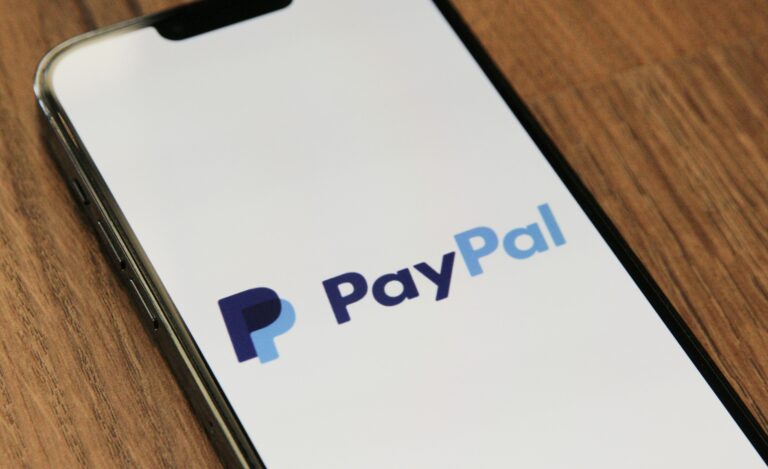Shopify is one of the most popular ecommerce platforms in the world. It’s known for its user-friendly interface, quick setup, and a vast ecosystem of apps and integrations.
But is Shopify really safe for your business-especially as you grow? Let’s dive into the pros and cons, with a special focus on the risks around scalability and support that many business owners overlook.
DON’T LET SHOPIFY SHUT YOU DOWN
The Pros of Using Shopify
Shopify stands out as a leading eCommerce platform for good reason. Its features are designed to help entrepreneurs launch, manage, and grow online stores with minimal hassle. Here’s a closer look at the main advantages.
1. User-Friendly Interface
Shopify is built for everyone, not just developers. Its intuitive, drag-and-drop editor makes it easy to add products, customize your storefront, and process orders-even if you have zero coding experience.
The dashboard is clean and simple to navigate, so you can manage your business without feeling overwhelmed by technical details.
2. Fast and Easy Store Setup
You can launch a professional-looking online store quickly. Shopify provides a wide range of customizable themes and templates, allowing you to create a unique brand presence without hiring a designer.
The setup process is straightforward, letting you get your business online in hours, not weeks.
3. Extensive Customization Options
Shopify offers hundreds of professionally designed themes, all of which are highly customizable. You can tweak colors, fonts, layouts, and more to match your brand’s style.
For those with coding knowledge, Shopify’s Liquid templating language opens up even deeper customization possibilities.
4. Robust App Ecosystem
With access to thousands of apps in the Shopify App Store, you can easily add new features to your store-like advanced marketing tools, inventory management, customer reviews, loyalty programs, and more.
This extensibility means you can adapt your store as your business grows and your needs change.
5. Comprehensive Payment Solutions
Shopify supports a massive range of payment gateways, including its own Shopify Payments, PayPal, Stripe, Apple Pay, Google Pay, and more. This flexibility ensures your customers can pay how they want, and you can sell in multiple currencies and languages.
Shopify is also PCI DSS compliant, so your customers’ payment data stays secure.
6. Mobile Optimization
Every Shopify theme is mobile-responsive by default, ensuring your store looks and works great on smartphones and tablets. This is important as more shoppers buy on mobile devices than ever before, and a seamless mobile experience leads to higher conversion rates.
7. Built-In Marketing and SEO Tools
Shopify includes built-in tools for SEO, blogging, email marketing, and analytics. These features help you drive traffic, engage customers, and track your store’s performance-all from one dashboard.
8. Centralized Inventory and Order Management
Shopify lets you manage your products, track inventory, and process orders from a single dashboard. You can also integrate with shipping providers and automate order fulfillment, saving you time and reducing errors.
9. Reliable Security and Regular Updates
Shopify handles security and software updates for you. The platform is regularly updated to protect against vulnerabilities and ensure your store meets the latest industry standards. This lets you focus on your business, not on IT headaches.
10. Strong Community and Support
With millions of merchants worldwide, Shopify has a large, active community. You’ll find plenty of resources, forums, and guides to help you troubleshoot issues or learn new strategies. Shopify also advertises 24/7 support, so help is available when you need it.
The Cons of Shopify-And Why Safety Isn’t Guaranteed
While Shopify offers many advantages, there are real risks and limitations that can threaten your business. Especially as you scale or operate in high-risk industries. Here’s a deeper look at the main concerns.
1. Strict Shopify Payments Risk Controls
Shopify Payments, powered by Stripe, has a very low risk threshold. If your business receives too many chargebacks, refund requests, or grows too quickly, Shopify can suspend or even terminate your payment account without warning.
This can happen for reasons such as:
- Excessive chargebacks or disputes
- Frequent refund requests
- Late order fulfillment or unshipped orders
- Suspicious or “high-risk” activity, even if unintentional
- Non-compliance with card network rules or Shopify’s terms
When your account is suspended, Shopify may freeze your funds, making it impossible to pay suppliers or fulfill orders. This can cripple your business overnight, especially if you rely solely on Shopify Payments.
2. Scalability Issues as You Grow
Shopify is easy to start with, but scaling brings new challenges:
- App Overload: As you add more apps to grow your business, conflicts and breakdowns become more likely. Too many apps can slow down your store, cause bugs, or even break your checkout process. Managing these technical issues requires extra resources and expertise.
- International Expansion: Shopify isn’t inherently built for multi-site or multi-country operations. Expanding internationally often means creating and managing multiple stores, which can be complex and costly. Even with Shopify Plus, the process can be a headache for DevOps and operations teams.
- Order Volume: Rapid growth can lead to fulfillment delays. If you can’t keep up with orders, Shopify may flag your account for late delivery, putting your payment processing at risk.
3. Limited Fraud Prevention Controls
Shopify’s fraud detection system analyzes orders after payment authorization, not before.
This means you might still process and authorize high-risk or fraudulent orders, only to discover the risk after the fact. You’ll then need to manually cancel these orders and potentially lose out on non-refundable transaction fees.
Shopify does not automatically block high-risk orders before authorization, leaving you to manage the fallout.
4. Unreliable Customer Support
Many business owners report poor experiences with Shopify support, especially during urgent issues. Complaints include:
- Long wait times and canned responses
- Difficulty reaching a real person for complex problems
- Delays in resolving critical issues, sometimes leaving stores offline for days
- Lack of proactive communication or clear timelines for resolution4
If your store is down or your payments are frozen, slow or ineffective support can lead to lost sales, damaged reputation, and frustrated customers.
5. Rising Costs and Complexity
As your business grows, Shopify’s costs can add up quickly. You’ll likely need to pay for extra apps, higher-tier plans, and possibly third-party payment processors if you’re considered high-risk.
The more you scale, the more complex and expensive your tech stack becomes.
Shopify is a powerful platform for many businesses, but its strict risk controls, scalability challenges, limited fraud prevention, and inconsistent support mean that “safety” isn’t guaranteed-especially as you grow or operate in a high-risk industry
Always have a backup plan and be proactive about managing risk as you scale.
Should You Trust Shopify with Your Business?
Shopify is a trusted name, and for many small and medium-sized businesses, it delivers a safe, reliable, and easy-to-use platform.
But as your business grows or if you operate in a high-risk industry, you need to look beyond the surface and consider whether Shopify is truly the best long-term fit.
Shopify Is Safe for Most Startups and Low-Risk Businesses
If you’re running a straightforward business selling clothing, home goods, or other low-risk products, Shopify is a great choice. You’ll benefit from its user-friendly tools, secure payment processing, and a vast library of apps to help you market and manage your store.
For many, Shopify is a safe, stable foundation for building an online brand.
But “Safe” Isn’t One-Size-Fits-All
The definition of “safe” changes as your business grows. Shopify’s strict risk controls, especially around Shopify Payments, can become a serious threat if your business:
- Sells products or services considered high-risk (like supplements, CBD, electronics, or digital goods)
- Experiences rapid growth or viral sales spikes
- Has higher-than-average chargebacks, refunds, or disputes
In these cases, your payment account can be suspended or terminated with little warning, and your funds may be frozen for months. This can bring your operations to a halt and damage your reputation with customers and suppliers.
Support and Scalability: Two Critical Weak Spots
When things go wrong, like payment holds, sudden account reviews, or technical breakdowns, Shopify’s support may not be as responsive or helpful as you need. Long wait times and generic responses can leave you stranded during a crisis.
As you scale, Shopify’s costs rise and managing multiple apps or international stores becomes more complex. If you outgrow Shopify’s built-in features, you might find yourself juggling third-party tools or even considering a platform migration.
What Should You Do?
- Assess Your Risk Profile: If you’re in a high-risk industry or anticipate rapid scaling, research Shopify’s policies and consider alternative payment processors or platforms.
- Have a Backup Plan: Don’t rely solely on Shopify Payments. Set up additional payment gateways and keep backup sales channels ready.
- Monitor Your Metrics: Keep a close eye on chargebacks, refunds, and customer complaints to avoid triggering Shopify’s risk controls.
- Test Support Early: Reach out to Shopify support with questions before you need urgent help. This gives you a sense of what to expect if a real issue arises.
Bottom Line
Shopify is a safe bet for many businesses, but as you grow or if you operate in a higher-risk space, the platform’s strict risk controls and support limitations can put your business at risk.
Trust Shopify for what it does best, but always have contingency plans and stay proactive about managing your business’s unique risks.









